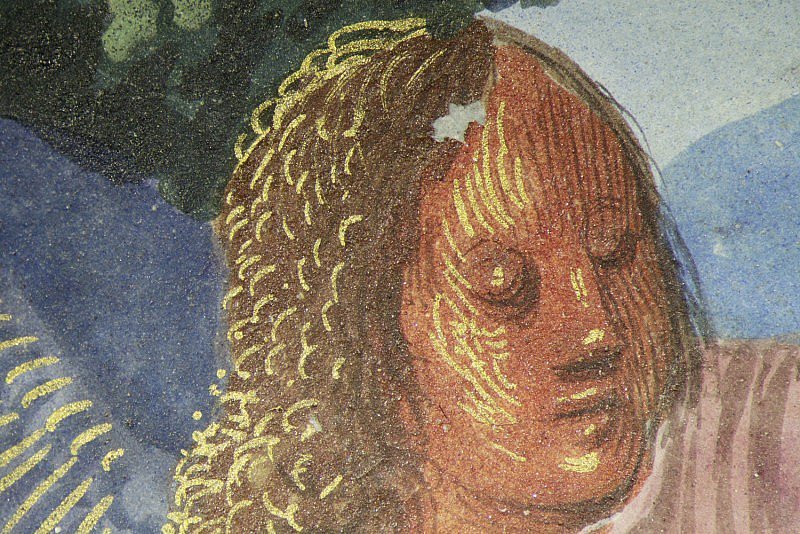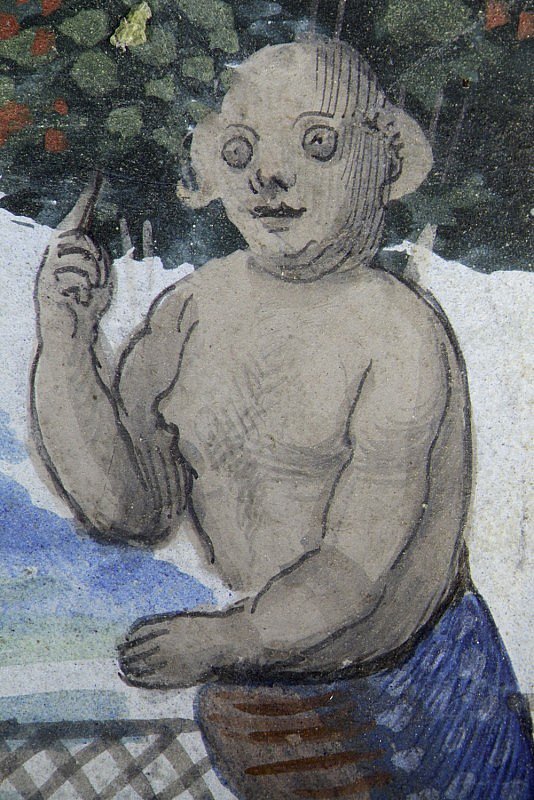Pentimenti
Artists' Techniques
The artist made several small changes to his compositions, as shown by elements which were sketched but never painted.
Notable examples include the serpent’s wing on fol. 4r, a carpet in the lower left scene on fol. 5v and the angel appearing in Joseph’s dream on fol. 7v.
A more significant change, which probably involved the entire scene, was made to the image of God and Gabriel on fol. 7v. The infrared image clearly shows the presence of an architectural interior, with arches at the top and a column on the right. The lower portion of a figure’s crossed legs is also visible, as well as his feet.
Select the ‘infrared’ layer and explore the hotspots in the folios on the right to see the pentimenti.


Temptation of Eve; Eve offering fruit to Adam; Expulsion of Adam and Eve
The infrared image of this page reveals the careful way in which Adam and Eve’s bodies were drawn, especially clear in the body of Adam in the lower left scene. It also shows that the serpent tempting Eve was initially designed to have wings, one of which was sketched but never painted.
